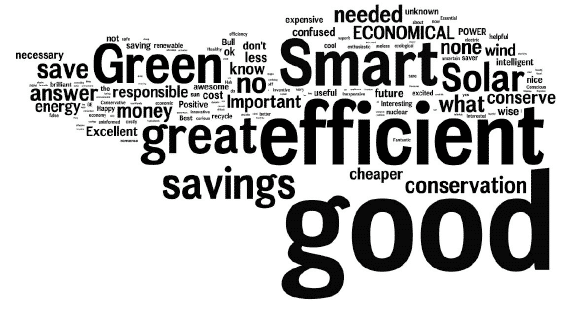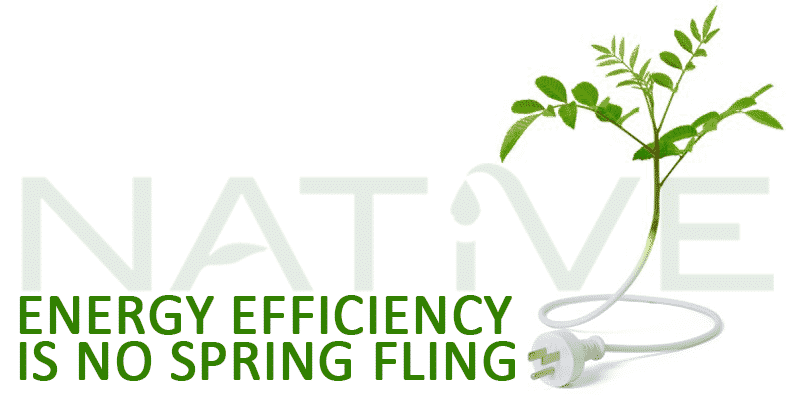Spring has most certainly sprung here in Texas. It’s that time of year when all the bluebonnets and wildflowers start coming to life. It is also the time of year when folks all over the country start their annual tradition of spring cleaning and home improvement projects. Why not change things up this year? Instead of refreshing your living room with a new coat of paint, think bigger and do something truly refreshing: think energy efficiency. Turn your attention to the ecological impact of your home and improve its energy consumption with even better energy production!
Improving your home’s energy efficiency can be an incredibly rewarding challenge that can save you money for years to come. The Environmental Protection Agency estimates that homeowners can save up to 20 percent of heating and cooling costs, or up to 10 percent of total energy costs just by properly insulating and air sealing their home. This can be for many a huge step forward in becoming more environmentally conscious in your own personal life, while still making financial sense.
To understand how efficient your home is, a home energy audit will help identify trouble spots, those areas where you are losing the most energy. For many, the roof is usually the most expensive offender. A poorly insulated roof can essentially be hemorrhaging energy year round… all on your tab. This means your home cannot keep the heat in during winter and cannot keep the heat out during summer, and your HVAC system as a result must run overtime just to compensate. It’s the equivalent of buying an expensive wallet, knowing you have a hole in your pocket. The only difference is that we will all feel this loss down the line.
Energy Efficiency Improvement
 Instead of being wasteful with all that energy and paying those higher utility bills every month, consider having spray foam installed in your attic. This cost-effective method involves a polyurethane foam that is sprayed into the rafters, creating an insulating barrier to heat and moisture. As opposed to more the traditional fiberglass batt and blanket methods, spray foam can have a higher heat resistance, thus, preventing heat from passing through it. It can also conform to every nook and cranny of your exposed attic walls for an excellent weather-tight seal. When properly installed throughout your home, spray foam provides what is known as a high performance thermal envelope, which ensures the internal temperature of your home remains stable throughout the year. An important note about spray foam is that it does not use ozone-depleting chlorofluorocarbons (CFC’s) or hydrochlorofluorocarbons (HCFC’s), so its use is not counterproductive to the greater good. Nevertheless, professional installation is still recommended.
Instead of being wasteful with all that energy and paying those higher utility bills every month, consider having spray foam installed in your attic. This cost-effective method involves a polyurethane foam that is sprayed into the rafters, creating an insulating barrier to heat and moisture. As opposed to more the traditional fiberglass batt and blanket methods, spray foam can have a higher heat resistance, thus, preventing heat from passing through it. It can also conform to every nook and cranny of your exposed attic walls for an excellent weather-tight seal. When properly installed throughout your home, spray foam provides what is known as a high performance thermal envelope, which ensures the internal temperature of your home remains stable throughout the year. An important note about spray foam is that it does not use ozone-depleting chlorofluorocarbons (CFC’s) or hydrochlorofluorocarbons (HCFC’s), so its use is not counterproductive to the greater good. Nevertheless, professional installation is still recommended.
To double your efforts throughout your home, you can also use caulk and weatherstripping to further keep unconditioned air from sneaking into the house or leaking out through gaps in your home. Similar to an open window, though far less visible, these tiniest of gaps exist wherever there is some type of opening in the structure of your house. From window and door frames to pipe and cable lines, air leakage can account for as much as 30 to 50 percent energy loss.
Thus, a well-insulated, weather-sealed home can take your home to an entirely new level of greenness. The benefit of using a green builder is that projects, like this, can be easily coordinated and bundled with a solar panel install for example, rather than relying on disparate companies to accomplish your goals. You will find that many of these systems offer huge, enticing rebates, like the current solar one from Austin Energy. A quality green builder will know how to get you the most return on your investment. Isn’t it about time you finally let your home work for you and your environment, instead of the other way around?
Combining these energy saving products with a solar (PV) system would even maximize the benefit even further. You could save AND create energy at the same time! At Native, we are able to offer all of these products and can bundle them for maximum savings and tax credit benefit.
Be sure to check out Energy Star’s Methodology for Estimated Energy Savings
Energy Efficiency Energy Efficiency Energy Efficiency Energy Efficiency Energy Efficiency Energy Efficiency

































Leave A Comment